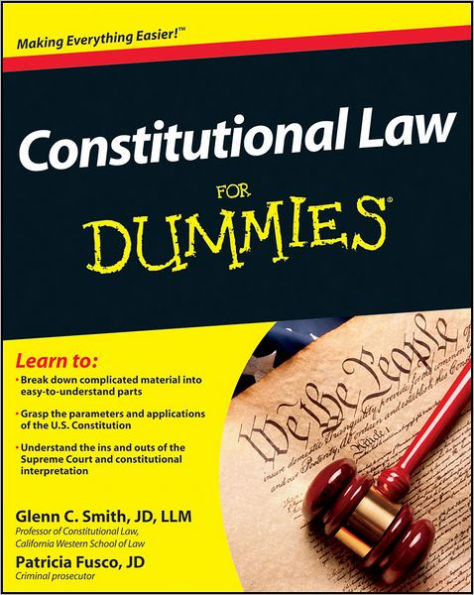Table of Contents
Introduction 1 Part I: Studying Constitutional Law: The Foundations 9
Chapter 1: Understanding the Constitution 11
Chapter 2: Constitutional Law: A View from 30,000 Feet 33
Chapter 3: Mapping Out Key Concepts and Distinctions in Constitutional Law 49
Part II: Allocating Governmental Roles 59
Chapter 4: “Constituting” a New Federal Government 61
Chapter 5: Charting the Reach of National Government Powers 83
Chapter 6: Sorting Out National Powers: Inter-Branch Conflict and Cooperation 105
Chapter 7: The Constitution and Federalism 125
Part III: Protecting Property Rights and Avoiding Arbitrary Action141
Chapter 8: Avoiding Arbitrary Government Action: Due Process of Law 143
Chapter 9: Protecting Property: Land, Contracts, and Guns 161
Chapter 10: Preventing Government from Discriminating 177
Part IV: Rights to Self-Expression and Political Participation 199
Chapter 11: "Express Yourself!" Freedom of Speech 201
Chapter 12: The Constitution and Religion 225
Chapter 13: Getting Involved: Voting and Becoming or Supporting a Candidate 247
Part V: Understanding Privacy Rights 263
Chapter 14: Implied Privacy Rights — Fundamental and Otherwise 265
Chapter 15: Preventing Unreasonable Searches and Seizures 289
Chapter 16: The Right against Self-Incrimination 311
Part VI: The Part of Tens 331
Chapter 17: Ten Landmark Court Decisions about Governmental Structure 333
Chapter 18: Ten (Plus Three) Top Individual-Rights Cases 341




